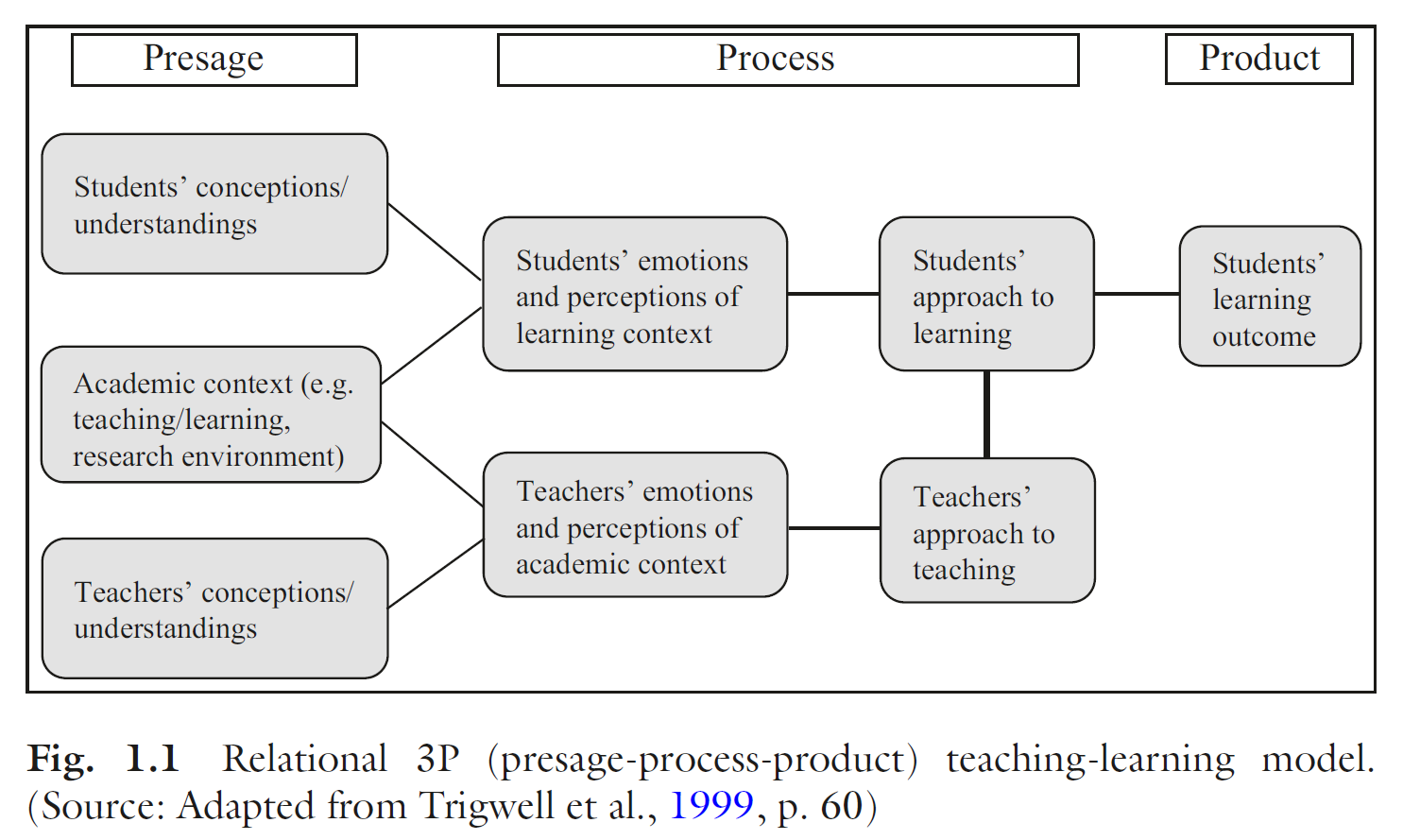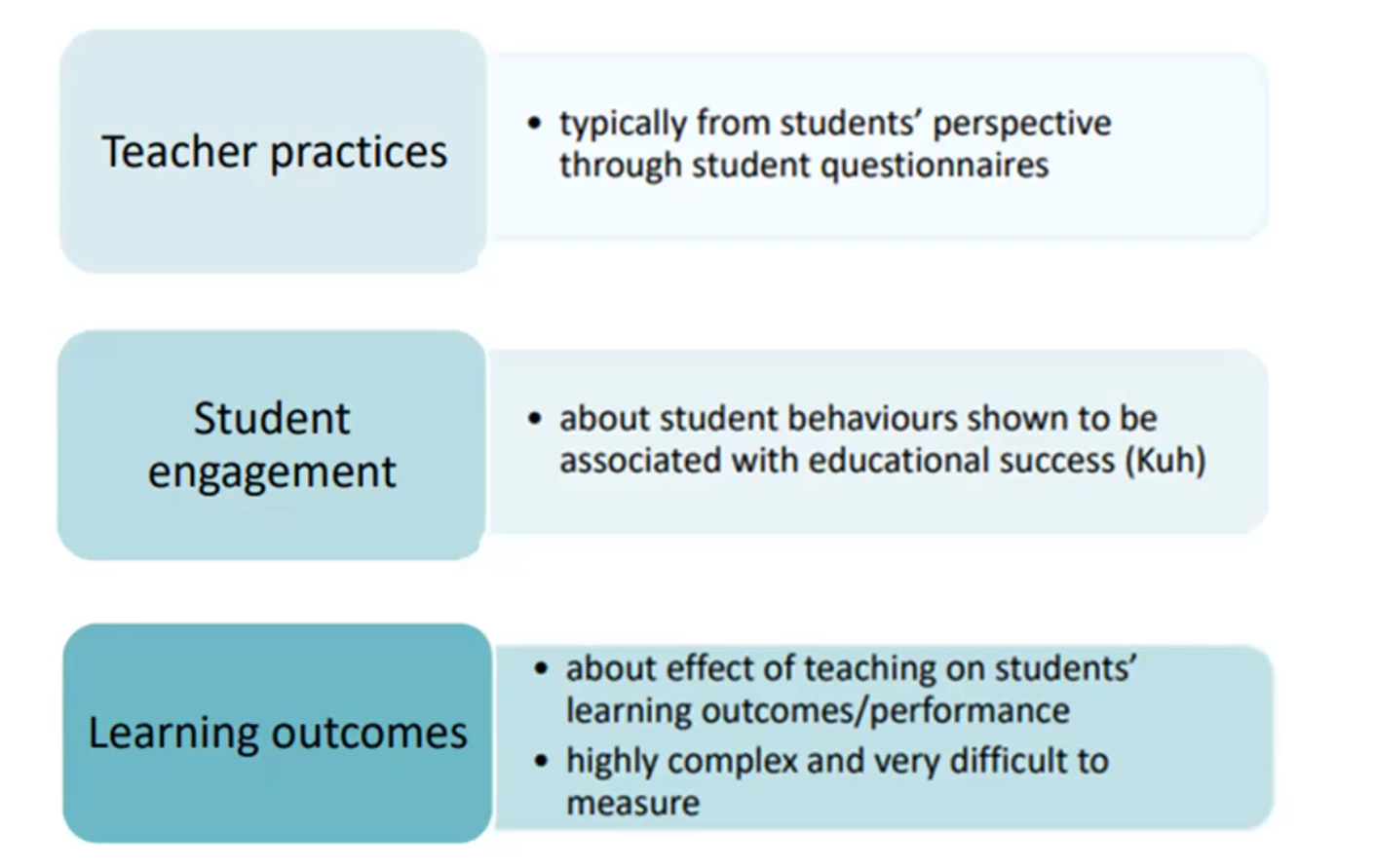Techniques
Learning is a process.
The quality of learning as a process is evident from a learning product/performance.
It involves active construction of meaning that involves conceptual changes.
Students/learners undertake learning, it is not something that a teacher can impose on them.
Instead, teachers facilitate the construction of meaning by the student by engaging them in helpful activities.
Seven principles:
-
Students’ prior knowledge can help or hinder learning.
-
How students organise knowledge influences how they learn and apply what they know.
-
Students’ motivation determines, directs, and sustains what they do to learn.
-
To develop mastery, students must acquire component skills, practice integrating them, and know when to apply what they have learned.
-
Goal-directed practice coupled with targeted feedback enhances the quality of students’ learning.
-
Students’ current level of development interacts with the social, emotional, and intellectual climate of the course to impact learning.
-
To become self-directed learners, students must learn to monitor and adjust their approaches to learning.
Ambrose, Susan A., Michael W. Bridges, Michele DiPietro, Marsha C. Lovett, and Marie K. Norman. How Learning Works: Seven Research-Based Principles for Smart Teaching. San Francisco: John Wiley & Sons, 2010. (this is a very persuasive book that can serve as a foundation for practical subject design and to educate teachers/tutors)

Trigwell, Keith, and Michael Prosser. Exploring University Teaching and Learning: Experience and Context. Cham: Springer, 2020.
Learning styles is a myth, research discredits this.
Newton, Philip M. ‘The Learning Styles Myth Is Thriving in Higher Education’. Frontiers in Psychology 6 (2015): 01908. https://doi.org/10/gccx46.

Deep and Surface Approaches to Learning and the Strategic Approach to Study in Higher Education
Lectures
Consider lectures as a way to demonstrate how an expert approaches a challenge. Work through a problems, show alternatives, link to real-world situations in research or practice.
7 Ways to Engage Students in Lectures
Consider having a chat or poll window open throughout.
Assessment
- To measure or grade a student’s achievement (& communicate to outside world). Summative assessment. Assessment of learning.
- To provide feedback and advice to help a student learn/improve. Formative assessment. Assessment for learning.
- To evaluate teaching/curriculum, to comply with institutions, accrediting bodies, employers, communities. To improve students’ metacognitive awareness and ownership of learning. Assessment as learning.
Feedback
- clear
- timely
- actionable
- objective oriented
Measurement of Teaching Quality

Techniques for assessing your own teaching:
- Articulate your teaching philosophy (this may evolve over time)
- Describe how you implement a student-centred approach to teaching
- Keep systematic records of your teaching activities, course design/reviews, materials/resource development and service
- Outline innovations you have developed in your teaching
- List examples of scholarship in your discipline and/or more broadly in learning and teaching
- Describe examples of your leadership in learning and teaching
Backlinks